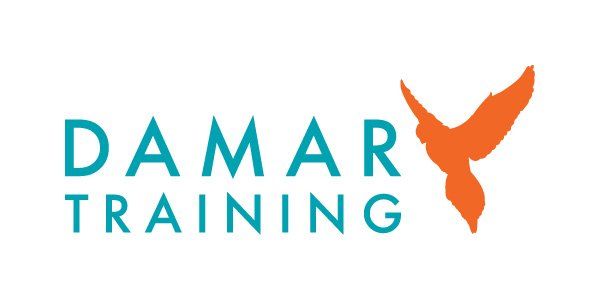Home, office, or hybrid?
Crispin Passmore • July 6, 2021
The future of work post pandemic

Apple
is insisting on its staff returning to the office three days a week – specifically Monday, Tuesday and Thursday. Twitter
has told its staff they can work from home for ever. Who is right and what are the lessons for the legal market?
To answer that, let’s just take a step back and pick up on some of the things that we might have learned over the last 18 months about remote working. Most significant to me is the sheer number of businesses and bosses that have realised that they can operate remotely and that their staff can be trusted. We have discovered that having good technology gives you a head start. And I think that we have also found that it can be easier to get slots in other people’s diaries for quick meetings – that has probably helped business development and client relationships. Many of us have might have learned that hybrid meetings, with some in the room and some on the phone or screen, are not as effective or inclusive as those where everyone is connected in the same way. Lots of people have found that collaboration is harder in a remote world – less cross-team talking, less accidental conversations on the margins of meetings and in the kitchen. Others have the culture, technology and workforce to collaborate through tools like Trello, Miro
and Slack.
And what of the people? I think that well-heeled, well connected, senior and global staff have found the transition easy. They were already mobile and used to working anywhere, at any time. Others have found that they can get more home stuff done without impacting on work through the day – we all know it is easier to walk the dog, do the washing, nip to the shop and have breakfast with our family if we are working at home. And not many miss the commute to the office – for cash, hassle or time reasons.
But we might also observe that it is also more difficult to separate work and home if our home is our office. I don’t want to sleep in my office, so I won’t work in my bedroom. But I have a choice and we must also have learned that being young and single and living in a shared house probably does mean working in your bedroom. And for many people the office is an important part of social life. How else are some of us meant to meet our future partners?
Businesses and people have also learned that some jobs are easier to do at home than others. And some parts of jobs the same. Someone has to open the post, plug in the server, and a whole bunch of other things. Outsourcing doesn’t solve that it just shifts the problem to a different organisation - which may or may not be a good thing. Some have been hit so hard financially that they have to reduce property costs to survive and compete.
Finally, perhaps businesses and people might also have learned that what works in a crisis is not the same as how to operate in the long term. Many leaders I talk to are grappling with all of this and looking to learn from others. I want to propose a way forward based on innovation, trialing, learning and building the evidence before making final decisions. And remembering that no decision is ever really final.
I am sure that there are many other observations and lessons. Perhaps it is the diversity of these lessons that matters. Or that the same issue looks very from different depending on your relationship and interests.
Even agreeing a hybrid solution doesn’t get us very far. Should teams come in together? Should senior managers come in with their teams or with their peers? Do staff want to come in with their friends or their teams? Should teams be mixed up to promote collaboration or kept close to those they work with most days. That doesn’t even touch on the issue of what days and how to use office space efficiently.
So how to proceed?
Start with the obvious: as Apple and Twitter show, the answer for one business is not the same as the answer for another. And that will apply to teams and people too. To find out the right answer we need to start with objectives. Surely the only objective is to decide what is right for the business – if you get it wrong for the business in short or long term then there is no business. And in getting it right for the business there are multiple factors involving recruitment and retention, financial position in short and long term – which will be partly driven by how well the firm did in the pandemic, its property costs and the cost of technology. So, Rule Number One.
Establish the objective.
This is a strategic decision and needs to be informed by context, risks and the usual elements that drive strategy. And an objective is not a bland mission – it has to be based on strategic context and that will include the fact that even if the legal restrictions are leaving us in two weeks the pandemic is not.
I have already heard of too many organisations that start in the middle trying to agree working patterns without ever setting out the objective. Or hiding the objective from staff and dressing everything up as about staff wellbeing: staff will see right through that. They expect to be treated as adults usually and those that don’t may not fit within many organisations anyway. That leads to Rule Number Two.
Be honest with the organisation and its people.
It surprises me that organisations are getting this wrong but getting a shared perspective on the framework and objective for deciding on where people work seems a pretty basic starting point.
Just like pay, bonus, leave, pension, voluntary work, culture, training, development, promotion opportunities and fit with an organisation’s mission, businesses need to build models of working that help attract and retain talent. That is not a distinct objective – it is one of the ways that firms secure the objective. If you are allowing remote working for the majority of the week why are you paying London salaries? That then gives us a Rule Number Three.
How and where people work is one part of the reward and retention package.
Discussion about place has to be part of the overall reward package rather than a separate discussion that is predicated upon post pandemic return. And part of that discussion will be what skills, behaviours and values the business values in this changing environment. Are they the same as they were pre lockdown? While knowledge may be the same for many roles, the behaviours and skills may be very different. How we collaborate virtually is often very different to office-based team working. Levels of trust might need to be higher when people are not in your line of sight. And individuals’ incentives to get help and work across silos are very different when at home, as are the pressures on what hours people work. That then leads to Rule Number Four.
Review your competency framework as part of these changes.
If the competency framework is changing, then it begs the question if your workforce is optimised for the new world you are building. How does this affect your training and development plans and investment? And what does it mean for who and how you hire people? That leads directly to Rule Number Five.
Update your training and development strategy and your recruitment plans to fit the new model workforce.
At this point it might feel like you are turning the business upside down. That is right and we should not duck that. Firms are creating a new target operating model and if they do not see it through that lens then they will end up making changes to where people work without thinking about the other issues that are in play here. Any sort of change programme of this scale would usually be based upon evidence, analysis and trials. It is unlikely that we would just guess that one model will work (for example because a pandemic forced it on us for a year) and bet the firm on that model. Firms might trial different approaches, work to adjust them over a period of time, develop best practice and create variations for different roles and teams. That leads to Rule Number Six.
Don’t leap to the answer. The last year has been one trial but keep trialling new ways over the next two years before making longer term decisions.
If firms are going to proceed carefully – and you’d think they would given the implications of getting this wrong – then you might expect them to collect evidence. That evidence will need to tie back to objective and manifest itself in different metrics, be that maintaining sales and revenue, reducing costs, improving staff retention, reducing hiring costs, reducing total reward bill (such as by having less London staff) or whatever is right for the firm. These will be different for each business because the objectives will vary. But Rule Number Seven is clear.
Identify your metrics and baseline now and measure them consistently.
There is no doubt that part of these metrics will be the savings from lower property costs that can be realised if less staff need office space. Given that the fall out from this touches on so many different areas – as my rules suggest – I would propose one last rule. There is no doubt that the pandemic has burnt through social capital within some firms at some rate. Others may have been better placed because they were already tech enabled, hybrid working or multi-site organisations used to virtual collaboration. But most are not. So, Rule Number Eight:
Spend at least half of the savings realised from property savings investing in the training, development, culture and values of the business.
Part of the experimentation will be in the layout of the office - if a firm still has one. Fewer banks of desks seems likely for many firms. And all CEOs are talking about increasing space for collaboration. But perhaps firms also need more 'open pods' for remote meetings and a different sort of meeting space.
There is no certainty in any of this. There are not answers that can be lifted out the box, or from a consultant. In fact, in reality there can be no rules – what I offer here is more of a checklist, or set of parameters. But even though this feels like an urgent issue we should still tread carefully in most businesses and remember that evangelists for any particular model for all firms are almost certainly wrong in general: Apple and Twitter may have both got it right for their
firm. And if they have not then they will need to be brave enough to just make new decisions and go again. Whatever is right for your firm over the next 12 months – as the pandemic continues to ebb and flow through winter – will need further review. So resist the evangelists and remember this is just another business decision. After all, making new decisions on new evidence is one of the keys to leading any business.

The Legal Tech Fund ran the best event for innovators int he legal market that I have found. TLTF 2023 was a a great opportunity to learn new things but best of all were the connections made and friends seen. These enabled new discussions and deeper debates about technology, capital deployment and liberalisation. TLTF 2024 is just one year away - I'm already excited.









